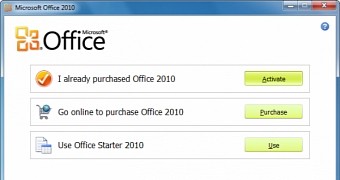Microsoft has officially discontinued Office 2010 and Office 2016 for Mac, so customers still running the two productivity suites would no longer receive any new updates.
Needless to say, just like in the case of Windows, running unsupported software isn’t by any means recommended, not only because no other improvements and updates would be received, but also due to the security vulnerabilities that would just remain unpatched.
The demise of Office 2010 and Office 2016 for Mac doesn’t come all of a sudden, as Microsoft previously announced that these two versions would be retired back in 2017.
“As we first announced back in April 2017, this decision aligns with our broader commitment to providing tools and experiences designed for a new world of work. If this year has taught us anything, it’s that we need to help our customers stay agile and connected despite constant change. And that means delivering cloud-connected and always up-to-date versions of our most valuable apps to every person and every organization on the planet,” Microsoft explains.
“With Microsoft 365 Apps, we do that in three big ways. First, the cloud enables real-time collaboration across apps and within Microsoft Teams, the hub for teamwork. Second, AI and machine learning advance creativity and innovation in everything from PowerPoint design to Excel analysis. And finally, built-in, cloud-powered security protects your data and provides the peace of mind that comes with knowing your business will not only be productive, but also secured.”
Without official support, not only that users aren’t getting any security fixes for the vulnerabilities that are discovered, but bugs are no longer fixed and technical support is no longer offered.
Unsurprisingly, the recommended choice for those affected by this end of support is the transition to Microsoft 365, the subscription-based service that guarantees continued updates and new features as soon as they are ready.
The adoption of Microsoft 365 itself has skyrocketed lately, especially as most of the world moved to working from home and more companies needed a productivity suite to stay in touch with colleagues and do their job remotely.
However, companies that haven’t prepared for the migration might be caught unguarded, especially given that many IT pros and admins are still working from home and transitioning to the subscription-based service might be more difficult.
“We understand that everyone is at a different stage of their journey to the cloud, and we’re committed to supporting our customers throughout their transition to Microsoft 365 Apps. For those customers who aren’t ready for the cloud and have a specific need for on-premises or hybrid deployment, such as fully disconnected or restricted environments, we offer Office 2019, the perpetual version of Office that does not receive feature updates. But for everyone else, we’ve created a set of resources to help you transition to the Microsoft 365 Apps and innovations designed to help keep your environment up to date once you’ve made the transition,” Microsoft explains.
According to Microsoft’s support policy, Office 2010 received 10 years of support, so customers are now required to upgrade to receive updates.
However, if Microsoft 365 isn’t the chosen path, Office 2019 is still available as a one-time purchase that can be used without a subscription. Microsoft has already confirmed that it plans to release at least one more stand-alone Office version after the 2019 suite, though for now, no other specifics are available.
On the other hand, it’s pretty clear that the focus is on Microsoft 365 right now, so companies should consider a switch to the subscription-based product as soon as possible.

 14 DAY TRIAL //
14 DAY TRIAL //